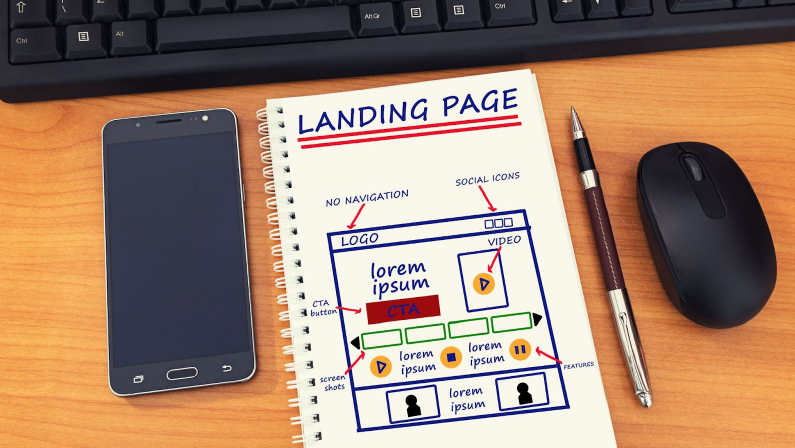We live in a digital age where a simple click and short attention spans shape how we interact with online stuff. Landing pages are your secret weapon in this fast-paced world. They’re like signposts guiding people to take action, whether it’s buying, signing up, or reaching out.
Imagine landing pages as your online welcome mat. They’re focused web pages designed for a specific job – getting your visitors to do something you want. Unlike your website’s main page, they’re like laser-focused invitations, inviting people in after they’ve clicked on an ad, search result, or promotion.
In this guide, we uncover the secrets that make landing pages successful and explore smart tricks to boost their impact. By following the tips in this simple guide, you’ll be ready to tap into the power of landing pages and achieve big things online.
What is a Landing Page?

A landing page is a standalone web page designed with a specific purpose in mind, usually centered around conversions. Unlike a homepage, which serves as the general introduction to a website, a landing page is targeted, concise, and focused. It’s where a user “lands” after clicking on a link from an advertisement, search engine result, or promotional campaign.
What’s the Difference Between a Homepage and Landing Page?
While both a homepage and a landing page are integral components of a website, they serve distinct purposes. A homepage acts as the digital front door of a website, providing an overview of the brand, its offerings, and navigation to various sections. In contrast, a landing page is laser-focused on driving a specific action. It minimizes distractions by eliminating navigation links, guiding visitors toward a single conversion goal.
Here’s a clear breakdown of the key differences between the two:
Homepage
- Introduction to the Website: The homepage is the main entrance point to a website. It provides a general overview of what the website is about and offers navigation options to various sections.
- Multi-Purpose: Homepages are designed to accommodate a variety of content and information. They may include a company’s mission, services, products, blog posts, contact information, and more.
- Audience Diversity: Homepages target a broad audience. They aim to cater to different visitor segments and provide an overall sense of the website’s offerings.
- Navigation Hub: Homepages often feature menus, links, and buttons that guide users to different sections of the site. They help users explore the entire website.
Landing Page
- Focused Purpose: Landing pages have a specific and focused purpose, such as promoting a single product, service, event, or offer. They are designed to encourage visitors to take a particular action.
- Singular Call to Action (CTA): Landing pages typically have a clear and prominent call to action (CTA), directing visitors to perform a specific action, like signing up, making a purchase, or downloading content.
- Minimal Distractions: Landing pages are designed with minimal distractions. They often omit navigation menus and links that might lead visitors away from the intended action.
- Targeted Audience: Landing pages are tailored to a specific audience or campaign. They are created to resonate with a particular group’s interests and needs.
- Conversion Tracking: Landing pages are often used for tracking conversion rates. Since their purpose is to drive specific actions, they provide valuable data on the success of a marketing campaign.
What are the Types of Landing Pages?

Landing pages can vary based on their objectives and the actions they aim to drive. Here are the primary types of landing pages:
Lead Generation Landing Page
A lead generation landing page is designed to collect valuable user information, usually through a form. These pages offer something of value in return, such as an ebook, webinar registration, or exclusive content.
Click-Through Landing Page
Click-through landing pages are commonly used in e-commerce. They provide additional information about a product or service, building anticipation and convincing visitors to click through to the next stage of the conversion process.
Sales Landing Page
Sales landing pages are designed with the goal of making a sale. These pages often include product details, benefits, testimonials, and a compelling call to action, urging visitors to make a purchase.
Why are Landing Pages Important?

Landing pages play a pivotal role in online marketing strategies, offering a range of benefits to businesses:
Increases Conversion Rate
By streamlining the visitor’s focus and providing a clear call to action, landing pages significantly boost conversion rates. The absence of distractions enhances the likelihood of visitors taking the desired action.
Improves User Experience
Landing pages offer a tailored user experience, aligning with the visitor’s specific intent. This seamless experience reduces bounce rates and keeps visitors engaged.
Gathers Valuable Data
Lead generation landing pages collect valuable user data, helping businesses understand their audience better and tailor future marketing efforts accordingly.
How Landing Pages Work

The success of a landing page hinges on its ability to deliver a compelling and seamless user experience. When a visitor arrives on a landing page, they are presented with a clear value proposition and a call to action. The absence of navigation links minimizes distractions and guides the visitor toward completing the desired action.
These pages are like signposts guiding visitors towards a specific goal. Let’s break down how they work in simple terms:
- Introduction that Hooks: A landing page starts with a catchy headline that grabs attention. It tells visitors what they’ll get and why they should care.
- No Distractions: Unlike regular websites, landing pages don’t have lots of links. This keeps visitors focused on one thing: the action you want them to take.
- Action-Packed Button: The main focus of a landing page is the big button (or link) that tells visitors what to do next. It might be “Sign Up,” “Buy Now,” or something else related to your goal.
- Visual Support: Pictures or videos help visitors understand what you’re offering. A clear image or short video can make a big impact.
- Tailored for You: Landing pages are crafted to match what you’re interested in. They talk directly to your needs, making you more likely to take action.
- Watching and Learning: The data from landing pages tells marketers what’s working and what’s not. This helps them make the page even better over time.
- The Moment of Decision: At the end of the journey, you decide: Do you click the button? Do you sign up or make a purchase? That’s the moment a landing page aims for – turning your interest into action.
How to Create a High-Converting Landing Page
Creating a high-converting landing page requires careful planning and attention to detail. Here are key strategies to consider:
1. Streamline with No Navigation Links
Navigation links can be tempting distractions that lead visitors away from your conversion goal. By removing them, you maintain their focus on the essential action you want them to take.
2. Captivate with a Compelling Hero Image
The hero image is the visual centerpiece of your landing page. It should be captivating and resonate with the offer you’re presenting. A well-chosen hero image communicates value before words even come into play.
3. Weave Magic with Catchy Headlines and Subheadings
Headlines are your first impression. A catchy headline captures attention, while a subheading reinforces the value proposition, providing visitors with a snapshot of what they stand to gain.
4. Convey Concisely with Supporting Copy
The supporting copy elaborates on the value you’re offering. Keep it concise and scannable while highlighting the key benefits. Clear, succinct content keeps visitors engaged and informed.
5. Integrate a User-Friendly Form
Forms gather crucial user information. Design them to be user-friendly, striking a balance between the amount of information you’re collecting and the ease of completion. Every field should serve a purpose.
6. Boost Credibility with User Testimonials
Authentic testimonials from satisfied customers build trust. Share real stories of positive experiences to show potential users that others have found value in what you’re offering.
7. Fortify Trust with Strong Indicators
Trust indicators like certifications, awards, and security badges instill confidence. They reassure visitors that their information is safe and that your offer is backed by recognized authorities.
8. Bolster with Statistical Proof
Numbers speak volumes. Data-driven visuals, such as graphs or infographics, provide concrete evidence of the benefits your offer delivers, making your value proposition more convincing.
9. Flaunt Awards and Recognition
Awards and recognition serve as social proof. Displaying them showcases your credibility and differentiates you from the competition, reinforcing the value of your offer.
10. Drive Action with a Compelling Call to Action Button
The call to action (CTA) button is your conversion catalyst. Make it stand out with contrasting colors and persuasive text. It should clearly communicate the action you want visitors to take, whether it’s signing up, buying, or exploring further.
Need Landing Pages? Get in Touch With LeadOrigin
Landing pages are not just web pages; they are bridges between interest and action. By skillfully integrating each strategy, you can create a landing page that guides visitors seamlessly towards conversions. Every element, from headlines to trust indicators, contributes to the overall success of your page.
If you’re ready to harness the potential of landing pages and supercharge your online endeavors, consider enlisting the expertise of Lead Origin‘s small business website development service.
Located at 2100 W Loop S #1400, Houston, TX 77027, Lead Origin specializes in crafting landing pages that captivate, convince, and convert. Their professional touch can help you unlock the true power of landing pages, propelling your online campaigns to new heights. Contact Lead Origin today and take the first step towards landing page excellence.

